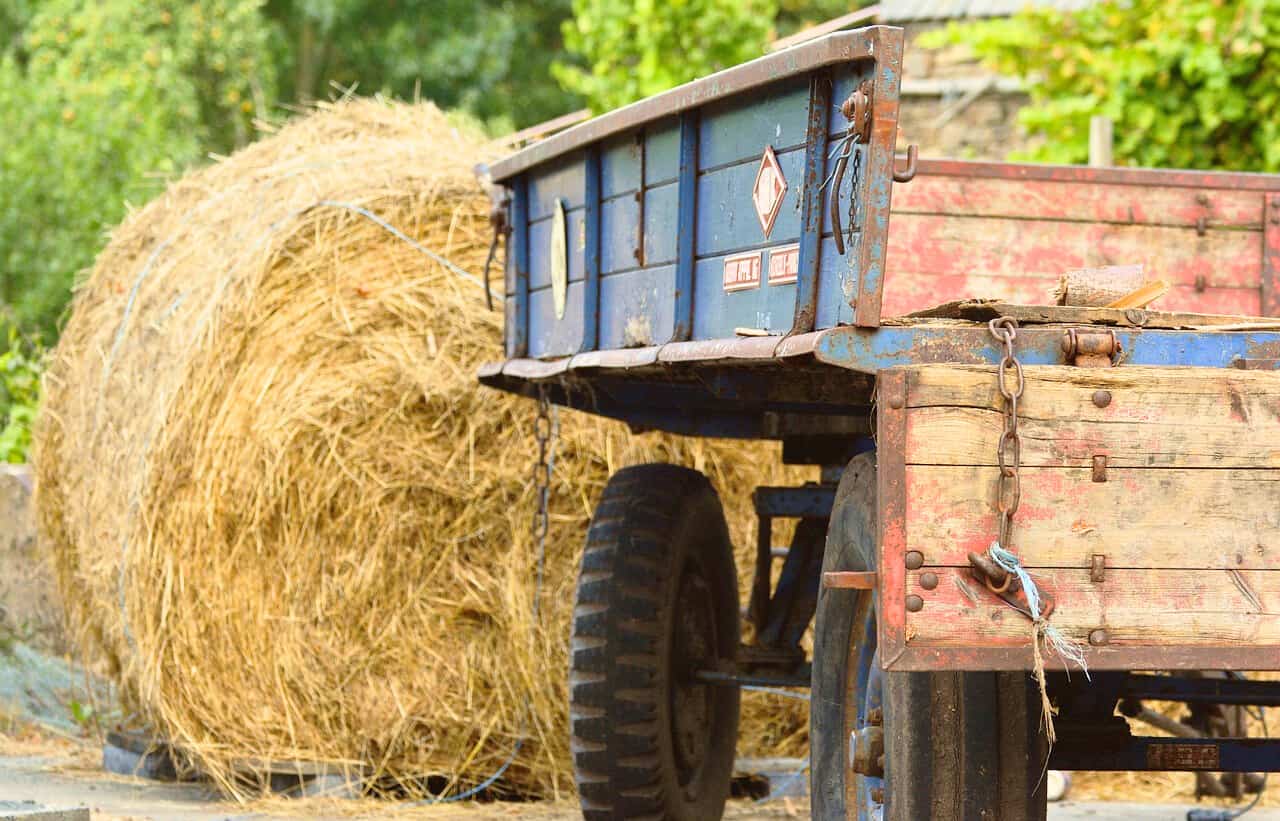When I think of homesteading ideas, I think of doing something “from scratch” instead of taking the easy way I’m used to doing it. This can be anything. Homesteading doesn’t require a lot of space but how much outdoor space and opportunities on your property will determine what you can and can’t do.
Decades ago, when I lived in a townhome in an urban setting, my homesteading initiatives involved growing herbs in containers. When I moved to my first house (as an adult) in the suburbs, I had two large pots outside my back door. I lived in a temperate climate zone and planted new fruits and vegetables each growing season. I planted tomato plants; grew strawberries from seeds; grew Swiss chard, lettuce, spinach; grew potatoes; and more.
After buying a high-performance food processor (a Vitamix from Costco), I started making my own almond butter and pesto from my homegrown basil plants.
I propagated so many basil plants that I jokingly referred to them as my small basil farm. In addition to giving them away, I dried the basil leaves and put them in spice jars. I also froze them in olive oil to use in the winter months.
These are all easy to do. Little did I know they were my first steps toward homesteading and living more sustainably. They involved things I used to buy but instead, I grew or made them myself.
Start Small & Focus On Your Interests
When beginning homesteading, it’s important to start small, build your confidence, and add on from there. You will be learning new skills and finding out where your interests lie. What are your passions and values?
Are you interested in conserving water? Perhaps you will hang rain chains, start rainwater harvesting, or create a rain garden.
Maybe you eat a lot of fresh produce and want to put it to good use. If you don’t have a way to add a compost tumbler or make your own compost pile, you can check with your city to see if accept food waste scraps, or collect them for your neighbor’s compost heap. (I do that with my watermelon rinds, pineapple crowns, and peels, etc. — larger scraps that will take longer to decompose in my compost tumbler. My neighbor gladly takes them.)
What’s Important to You?
Whether you will be urban homesteading, suburban homesteading, or rural homesteading, pick something important to you and that seems doable, and start from there. Homesteading doesn’t need to mean raising livestock or chickens or even gardening… though those are some of the obvious ones.
Factor in your space, budget, time, and interests, and consider these homesteading ideas for small spaces and large properties. I’ve included easy ideas and more difficult ones in no particular order except to separate them if they involve raising animals.
Homesteading Ideas
Think about ways of maximizing what you have. What can you make or grow instead of buying? What can you grow or raise? How can you use something that would have been discarded?
Here is a list of some of the things my husband and I did when we moved out of the suburbs to a more rural neighborhood without an HOA. None of these ideas of homesteading pursuits involve raising animals:
- Installed solar panels on our main dwelling
- Set up 2,500-gallon rainwater cistern
- Built a shop
- Hung three rain chains
- Hired someone to reroute rainwater away from our home and to prevent runoff
- Compost
- Have emergency supplies, a first aid kit
- Store beans in 5-gallon containers
- Grow potatoes in 5-gallon buckets
- Collect and save seeds
- Made a large patio area with reclaimed bricks
- Built raised garden beds and an enclosure to protect from animals
- Grow kumquat trees in pots; lemon, orange, and pomegranate trees in the ground
- Grow so many veggies and fruits in containers and pots and in raised beds
- Use seeds from our library seed program and buy organic seeds
- Grow and propagate herbs; dry and freeze herbs
- Save our glass jars and collect neighbors’ glass and take them to city glass recycling
- Collect firewood from tree branches we prune
- Built many things with wood: furniture, picnic benches, vertical garden, etc.
- Used our neighbor’s pellet mill and made mesquite BBQ grilling pellets
- Our kids made a firepit from concrete blocks
- Our kids used discarded glass bottles and bricks to surround our fruit trees; help contain water when we water them
- Set up a DIY irrigation system from a rainwater cistern
- Enjoy desert survival food from native plants (prickly pear, mesquite trees, hackberry bushes, and trees)
- Learned about septic system maintenance
In addition, I make and bake most everything from scratch and cook from scratch 90% of the time. The baking and cooking were initially motivated by food allergies and then became more about:
- What can I make instead of buying?
- How can I make the most out of this fruit, vegetable, and meat (make bone broth, save bacon grease, render lard, freeze leftover veggies, crush eggshells in the garden, etc.)?
Homesteading Ideas Without Animals
Use a solar oven
When my kids were in 5th grade, their school assignment was to build a solar oven at home. They had to bring it to school along with something to cook. Pizza boxes and tin foil were very handy!
What fun. It was so much fun, we bought a sun oven and rationalized the purchase as being something we would have in case of emergencies. We cooked rice, baked a cake, cooked vegetables, and reheated lots of leftovers. It worked well.
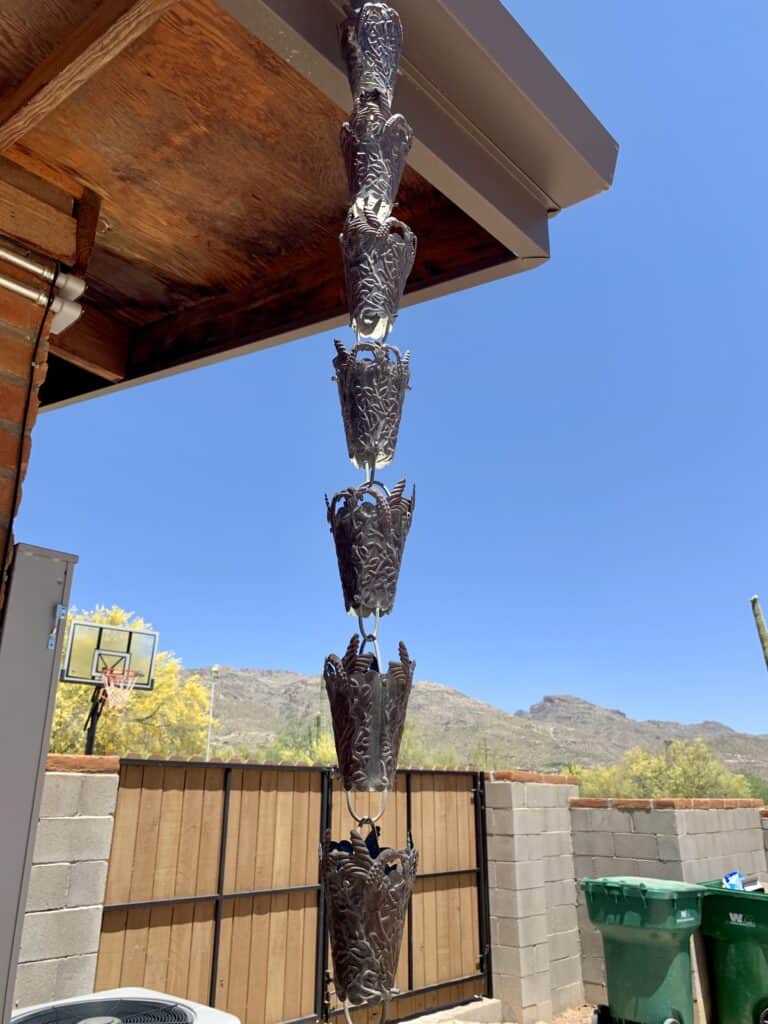
Hang rain chains
Direct rainwater from gutters and funnel it into rain barrels, into rain gardens or other areas. Rain chains can be decorative but serve an important function in helping to direct rain water away from your home.
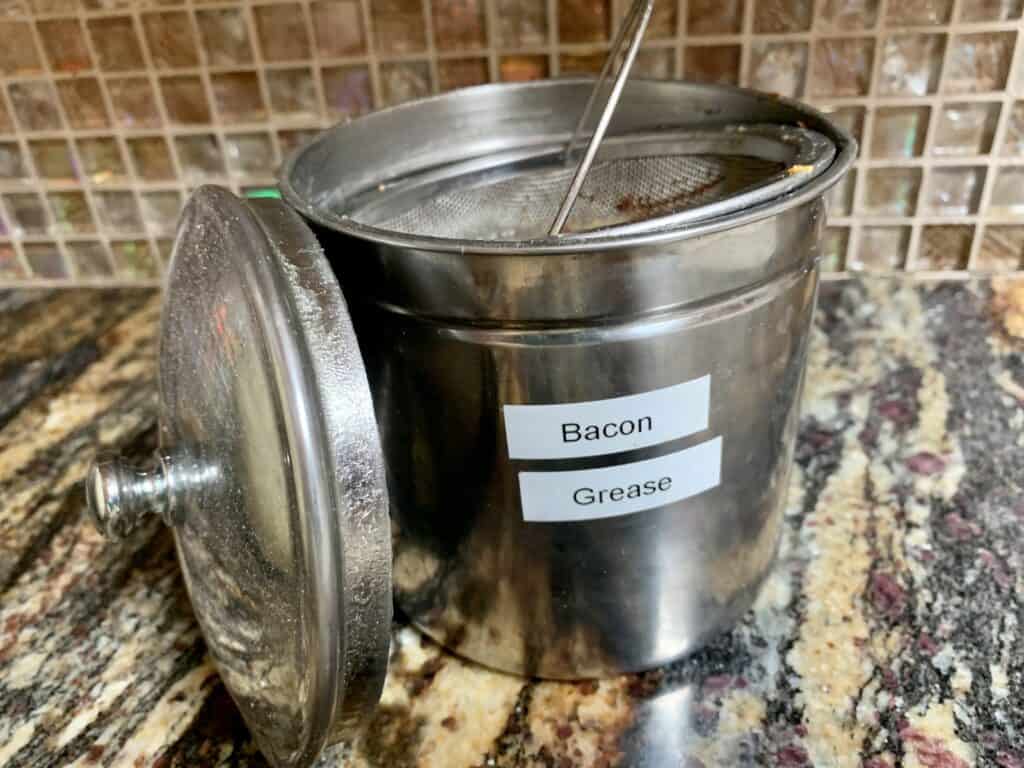
Save bacon grease
Lots of these homesteading ideas involve saving and using as much of something as you can. Bacon grease is a perfect example of this. Save clean bacon grease to use to fry up eggs, mix with green beans and bits of bacon, and fry up hamburgers, to cook vegetables (it’s great drizzled on Brussels sprouts or string beans), and more.
I have a bacon grease container with a built-in strainer which makes it easy.
Refinish or upholster furniture
Go to second-hand shops, garage sales, or look around your home. Create a new look with an old piece of furniture. There are lots of ideas you can find online to spruce up an outdated or worn table, chairs, desk, hutch, dresser, sideboard, etc. instead of buying new.
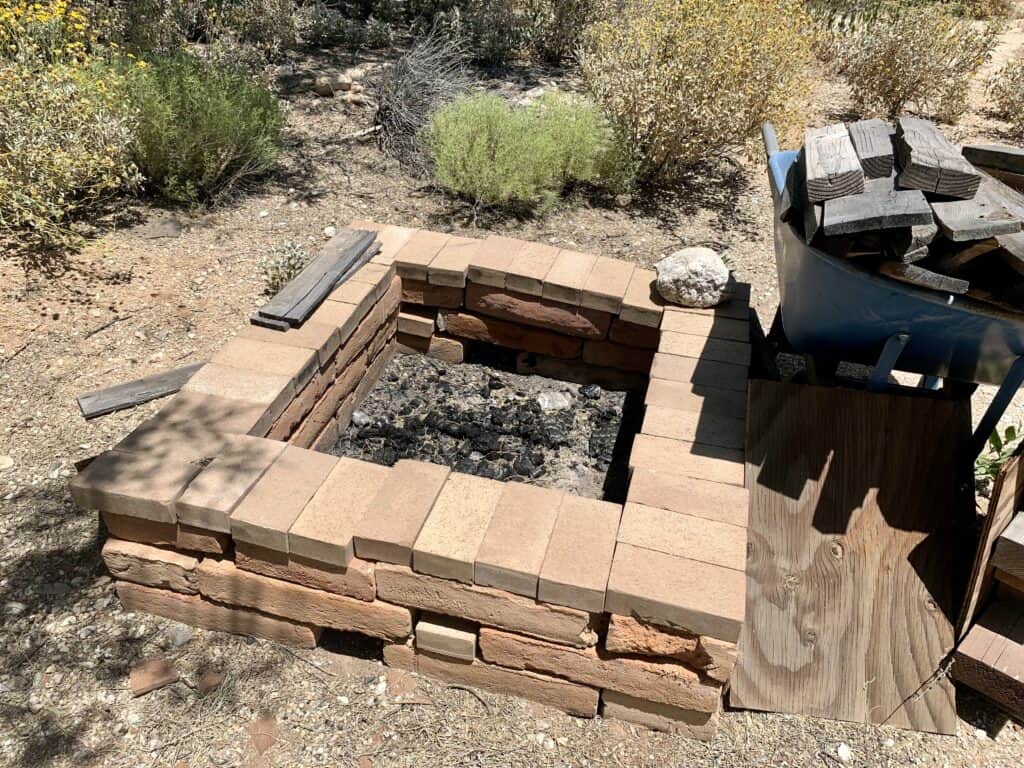
Build a fire pit
A fire pit is a great addition to any homestead for cooking, warmth, and relaxation. You can build a simple fire pit using rocks, bricks, or concrete blocks, or get more creative with a custom design. Make sure to follow local regulations and safety guidelines for outdoor fires.
Try cooking a meal (meat, potatoes, carrots, onions, etc.) around the campfire using tinfoil cooking. Cooking without relying on electricity or gas is a way to get back to the basics.
Make compost tea
Compost tea is a liquid fertilizer that is made by steeping compost in water for several days, allowing beneficial microorganisms to multiply and create a nutrient-rich liquid that can be used to feed plants.
Making compost tea is somewhat easy and can be done using a simple container, compost, and water. As the compost steep, beneficial bacteria and fungi multiply and create a liquid that is rich in nutrients and minerals essential for plant growth.
Compost tea can be used to water your plants or sprayed directly onto the leaves to provide a quick boost of nutrients. It’s a great way to begin homesteading and can provide a valuable source of organic fertilizer, reducing reliance on chemical fertilizers.
Build a bat box
Building a bat box is a unique and eco-friendly homesteading idea that can help control insect populations in your garden. Bats are natural pest controllers, and can eat hundreds of mosquitoes and other insects per hour. Bats are important pollinators as well, so attracting them to your property can also benefit your garden.
My kids did this through scouting but check local nature centers to see if they offer a workshop or class. Sometimes libraries and home improvement centers offer opportunities for woodshop projects.
Building a bat box is a simple, educational, and affordable project that requires basic materials like wood, screws, and mesh. A bat box provides a safe roosting spot for bats, which can help attract them to your homestead.
You will be supporting local bat populations while reducing the need for chemical pesticides.
Grow and dry herbs
Growing herbs is a great homesteading activity that doesn’t require a lot of space. You can even grow them indoors in a sunny window. Herbs like basil, thyme, rosemary, and mint, are relatively easy to grow.
Buy an established plant from your grocery store’s produce department. My Trader Joe’s always has great ones. You can also find them at your local nursery or home improvement stores such as Menards, Home Depot, ACE Hardware, and Lowe’s.
Starting new plants from seeds or cuttings is a cost-effective way to expand your herb garden, and can also be a fun and rewarding way to experiment with new varieties.
Drying herbs is a great way to preserve your harvest for use during the winter months. Harvest, wash, dry, and hang the herbs upside down in a dry, warm place.
Freezing herbs in olive oil is another preservation method that can help you enjoy your herbs all year round. Blend fresh herbs with olive oil and freeze in ice cube trays for later use in soups, stews, or marinades.
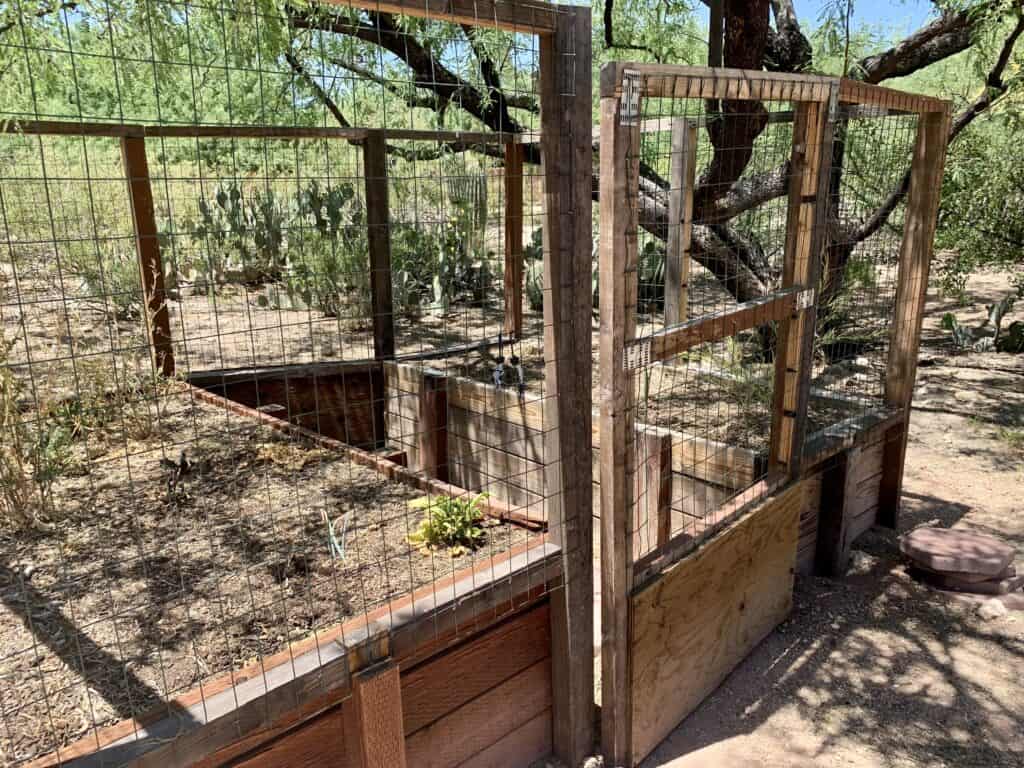
Build a raised bed
If you are handy and can borrow tools, it’s easy to make a garden bed cheaply using reclaimed wood. Otherwise, buy a simple kit at the hardware store, and get planting!
Start a vegetable garden
I used to see seed packets at the store, think, “I want to grow xyz!” I’d buy the seeds, plant and water them, and then be surprised when nothing grew!
Gardening isn’t difficult but you do need to plant things that will grow in your area. If you don’t know it, learn your climate zone. Then you can research what grows best in your area and when to plant it.
One of the first steps to homesteading is growing your own food. A vegetable garden is a great way to do this, and it can be as simple or complex as you want it to be.
Learn using good quality soil and about companion planting (what to grow next to each other.) This will help ensure you grow a successful crop.
Start small with a few easy-to-grow crops like tomatoes, peppers, and lettuce, and then expand your garden as you gain experience. You can grow from seed or plant starter plants.
Make nut butter
You can make nut butter using a food processor or blender. Experiment with different nuts like almonds, cashews, and peanuts (a legume, not a nut). Homemade nut butter contains fewer additives than store-bought varieties and is simple and cost-effective.
It is so easy to make in small batches, and store in jelly jars or small mason jars.
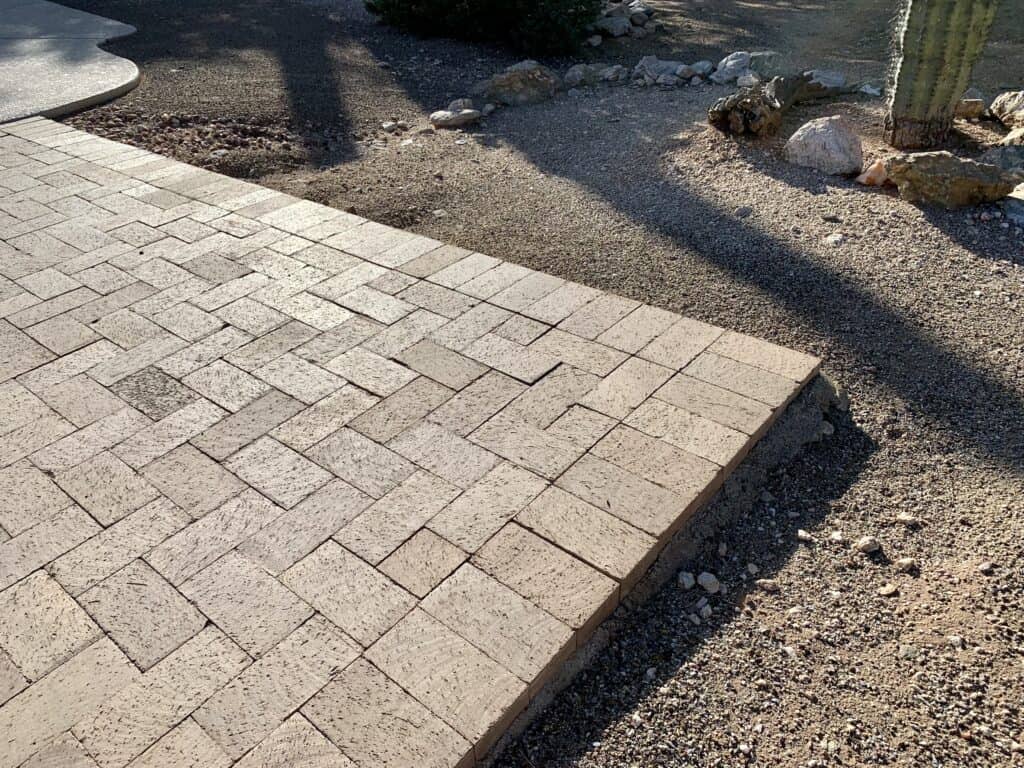
Build a greenhouse
A greenhouse is a great addition to any homestead because it allows you to grow plants year-round. You can use it to start seedlings in the spring, extend your growing season in the fall, and grow cold-tolerant crops in the winter.
Greenhouses usually come in kits. There are small greenhouses if space is an issue. You can also build one yourself using inexpensive materials like PVC pipe and plastic sheeting.
Attract owls
While some people may not want to attract owls, our chickens are secure at night and at dawn, so attracting owls isn’t an issue. We want to attract owls to help control pests naturally. Learn how to attract owls to your property.
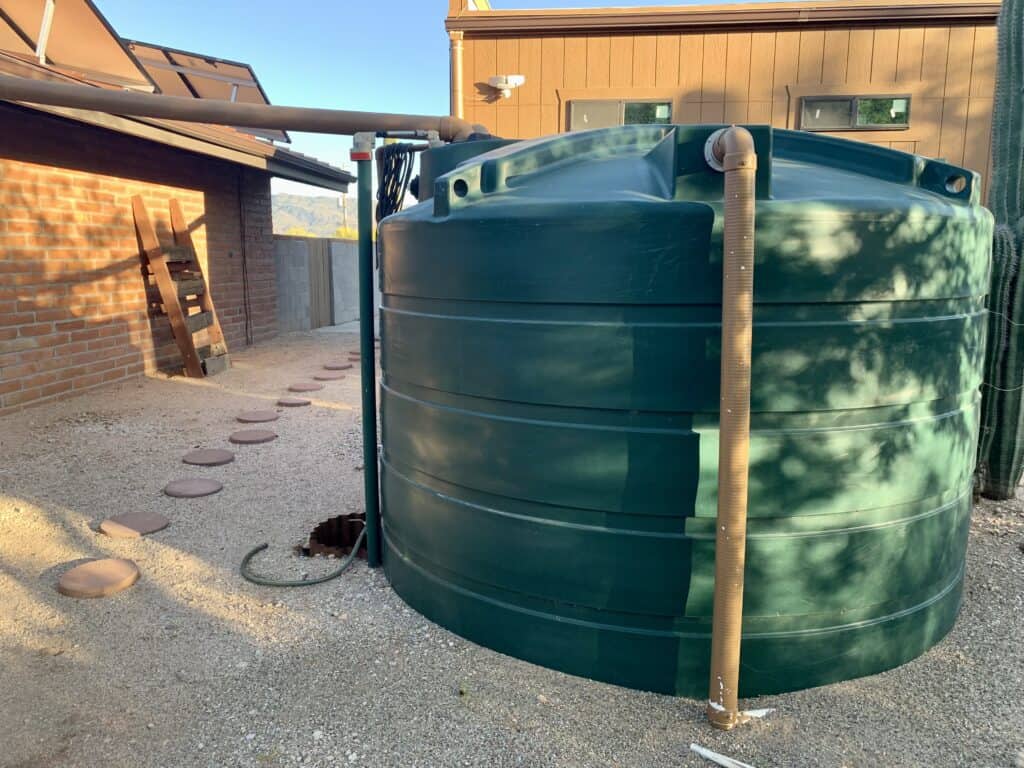
Build a rainwater harvesting system
Water is a valuable resource, and homesteaders often look for ways to conserve and collect it. A rainwater harvesting system can help you collect and store rainwater for use in your garden or livestock. Build a simple rain barrel system or a more complex system with underground or above ground tanks and filters.
Consider also ways to capture and reroute water with your landscaping. Create a rain garden.
- Is it illegal to collect rainwater
- Rainwater collection
- Best rainwater harvesting system for your homestead
Make cleaning and personal care products
Homesteaders often value simplicity and natural products. Making your own cleaning and personal care products can help you avoid harsh chemicals and reduce waste.
Use reputable sources to learn how to make your own laundry detergent, soap, toothpaste, and more using simple ingredients like baking soda, vinegar, lemon, and essential oils.
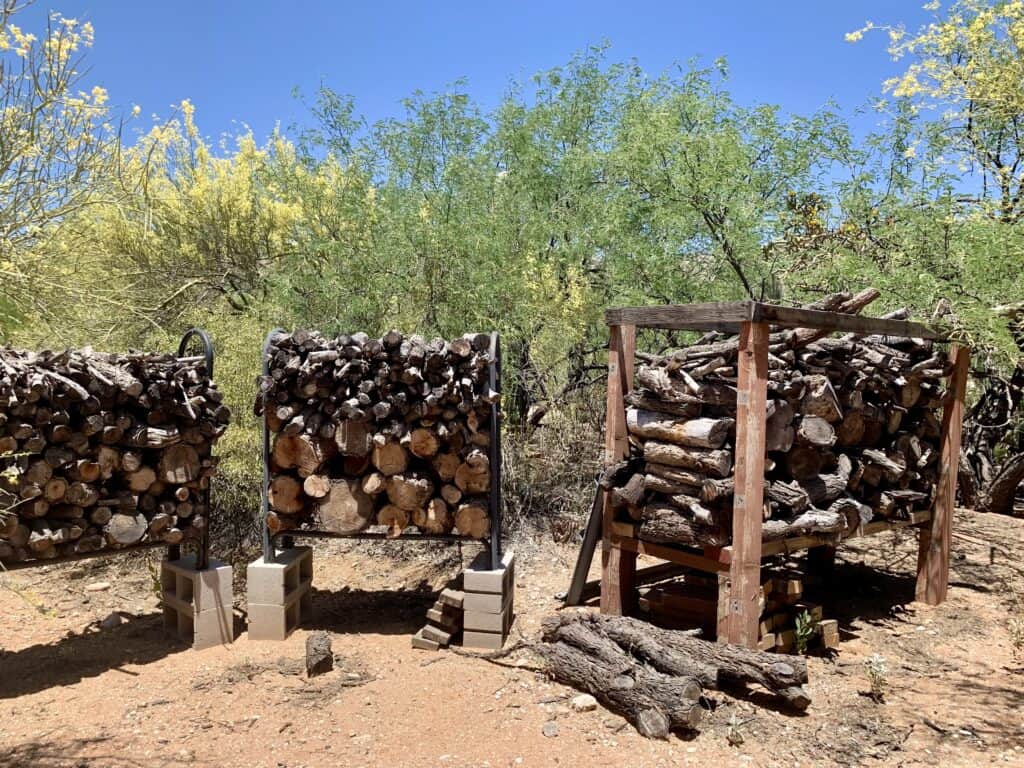
Air-dry your laundry
Hang wet clothes on a clothesline, patio chairs, etc., or on a drying rack indoors. In addition to a drying rack, I have a retractable clothesline that hangs in the shower that I use to dry clothing and sheets.
Make bone broth
When I cook whole chickens (from meat hens or when I buy rotisserie chicken from Costco) or cook a turkey, I save the carcass. When I make beef, I save the bones in the freezer until I have enough to make bone broth.
Making bone broth at home is a great way to use up leftover bones from meat or poultry, and can be done on the stovetop, in the oven, in a slow cooker, or in an instant pot.
This is a great example of homesteading because, like with composting, you will be using something that otherwise would have gone in the landfill.
Cook beans with ham bone
The same idea with using beef and poultry bones, I save ham bones and cook it in my crockpot with beans. It’s a great way to add flavor to dried beans. (Soak them before cooking.)
Grow without soil
A big first homesteading project would be to set up hydroponics, aquaponics, or aeroponics. These are ways to grow vegetables, herbs, and fruits without soil. There are different setups to maximize your growing space and increase your food production.
Grow with hydroponics
Getting started with hydroponic gardening is a great homesteading idea that can provide a sustainable and efficient way to grow fresh produce. Hydroponic gardening is a method of growing plants in nutrient-rich water instead of soil, and can be done indoors (with grow lights) or outdoors using a variety of systems.
Some of the best plants for hydroponics are romaine, spinach, Swiss chard, and other leafy greens, tomatoes, basil, and more.
Hydroponic growing can be particularly useful in areas with limited space, as it allows for high-density planting. It can produce higher yields than traditional soil-based gardening.
To get started, you’ll need to choose a hydroponic system that fits your needs and goals, and purchase the necessary equipment like a nutrient solution, growing media, and grow lighting. I’ve found there is a bit of a learning curve with hydroponics, more so than with soil gardening.
Aquaponic gardening
I have not tried this, but aquaponic gardening is another sustainable homesteading activity that combines aquaculture (raising fish) with hydroponic gardening. Aquaponic systems use fish waste to fertilize plants, while the plants help filter the water for the fish.
My kids’ had the opportunity to grow plants in aquaponics with an amazing science teacher they had in elementary school.
Tomatoes, peppers, cucumbers, strawberries, and lots of other fruits and veggies do well in aquaponics.
To get started gardening with aquaponics, you’ll need to choose a system that fits your available space and resources, and purchase equipment including a fish tank (sometimes called stock tanks), grow bed, and nutrient solution.
Aeroponic gardening
Aeroponic gardening involves growing plants in a misting or spraying environment, without the use of soil or a traditional hydroponic growing medium.
Aeroponic systems use a nutrient-rich mist to nourish plant roots, which are suspended in the air. This allows for high-density planting and efficient use of water and nutrients, and can produce higher yields than traditional soil-based gardening.
You can grow indoors or outdoors, and it’s ideal homesteaders with limited space. To get started, you’ll need to purchase or build an aeroponic system and nutrient solution. Plan to grow leafy-greens and other vegetables that do well in aeroponics.
Make an herb spiral garden
Herb spiral gardening is great for areas with limited space. This homesteading idea involves building a vertical spiral-shaped raised garden bed using rocks, bricks, or other materials. The spiral shape allows you to grow a variety of herbs in a small space.
The top of the spiral receives the most sun and is ideal for herbs that prefer a drier and warmer environment. The bottom is cooler and more moist, making it ideal for herbs that prefer more shade and moisture.
Herb spiral gardening is a great option for urban homesteading because it maximizes the use of a small outside space.
To get started, choose a location that receives plenty of sunlight, gather materials for building the spiral (it’s a great project to make out of extra bricks), and choose herbs that are well-suited to your climate and the season.
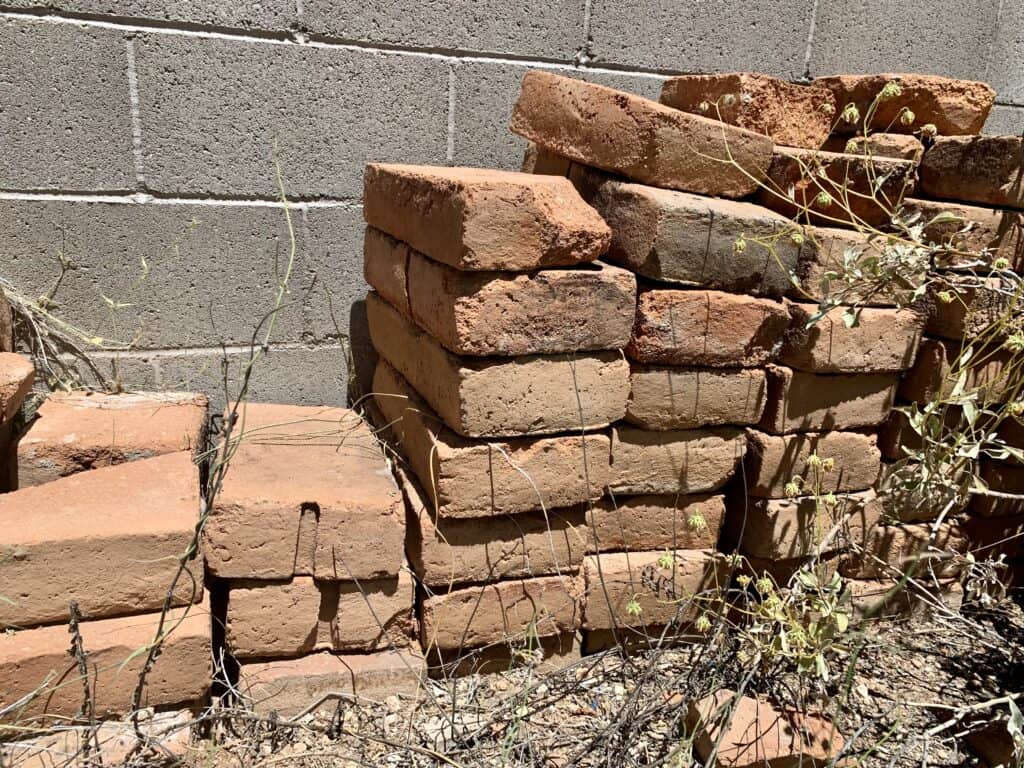
Learn traditional skills
Homesteading is a way of life that values self-sufficiency and traditional skills. Learning skills like knitting, sewing, quilting, needlepoint, macrame, woodworking, and blacksmithing can help you create your own tools, clothing, furniture, crafts, and household items.
What interests you? Check with local groups in your area. Check with your local library and recreation center. You can learn from each other and enjoy the social component of having common interest.
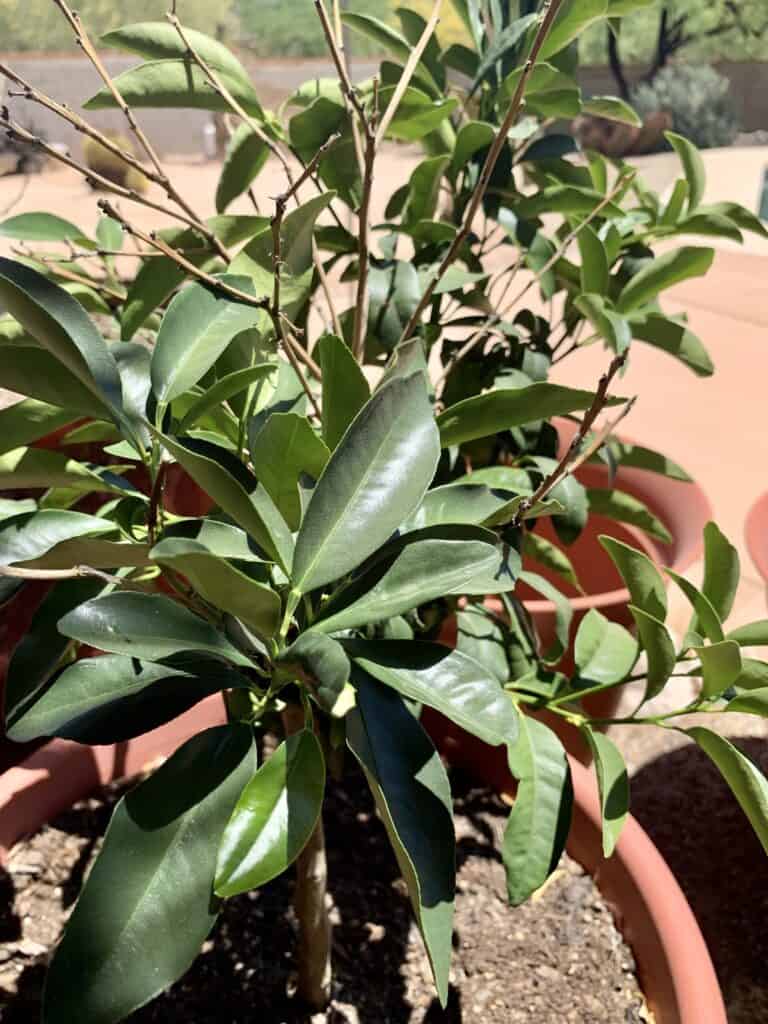
Plant fruit trees
Starting a mini orchard is a great homesteading activity that can provide a variety of fresh fruits for your family to enjoy. Your orchard can be as small as a few fruit trees in your backyard in containers or as large as a small orchard on your property.
You MUST choose fruit trees that are well-suited to your climate and growing conditions. Consider your budget and watering capabilities as well. If you have deer, you may also need a way to protect the trees.
Popular fruit trees for mini orchards include apple, pear, peach, plum, cherry, citrus, and fig. Consider nut trees as well. (Again, this depends where you live.) Consider berry bushes as well.
Starting a mini orchard requires planning and patience but it can provide a long-term source of fresh and healthy fruit for your homestead. As your fruit trees mature, you can learn new skills like pruning, grafting, and harvesting.
Cook from scratch
I used to never cook at home but now, I do every day. Crockpots and Dutch ovens make it so easy to cook from scratch. I love cooking meat in these because they are more forgiving in terms of how long you cook them. The meat is always moist and tender.
For the stovetop, I use a cast iron skillet. I use my Vitamix a ton.
Cooking is an essential part of the homesteading lifestyle. It can provide a variety of benefits for you and your family. Cooking your own food allows you to control the ingredients.
Preparing meals at home can also help you reduce waste and develop new culinary skills. As a homesteader, you can take advantage of your own fresh produce and herbs to create tasty meals for your family.
Whether you’re preserving your own fruits and vegetables, baking bread from scratch, or making a weeknight dinner, making food from scratch can be a fun and rewarding way to connect with the food you eat and the land you live on.
Bake from scratch
Baking from scratch is another thing that will help bring you back to the basics — which is really what homesteading is. For some people, baking is more fun than cooking because of all the sweet treats you can make.
Enjoy blueberry muffins, scones, date bars, cupcakes, and biscotti. You can bake almost anything by having basic ingredients on hand. Pantry staples: flour, sugar, yeast, cocoa powder, baking soda, baking powder, confectioners sugar, and pure vanilla extract. Perishables: eggs, butter, and milk.
It’s so easy to bake bread using simple ingredients like flour, water, yeast, and salt. You don’t even need a bread maker to do it.
By baking from scratch, you can control the quality of the ingredients and reduce waste in packaging.
Make cheese and yogurt
Make your own cheese, yogurt, or kefir using raw milk or milk alternatives like coconut or almond milk. If you have an Insta-Pot, you can buy a yogurt starter and easily make your own yogurt.
Use a smoker
Smoke meat, fish, or vegetables to add a delicious and smoky flavor without relying on a grill or oven.
Learn to preserve food safely
Whether you buy it or grow it yourself, it’s important that nothing goes to waste. Preserving it means you can enjoy it year round. I recommend starting with freezing or dehydrating foods when beginning. I had a food dehydrator for years before realizing my oven has a dehydrate function!
NOTE: Canning and fermenting improperly can be dangerous; research before you begin.
- Freeze foods you would otherwise let spoil and toss.
- Dehydrating food involves removing moisture from the food, which can be done using a dehydrator or an oven.
These take extra caution and knowledge to ensure food safety:
- Fermenting foods involves allowing natural bacteria to break down the sugars in the food, creating a sour or tangy flavor. Ferment vegetables to create flavorful and probiotic-rich foods like sauerkraut, kimchi, and pickles.
- Home canning involves heating food in jars and sealing them to create a vacuum, which prevents spoilage.
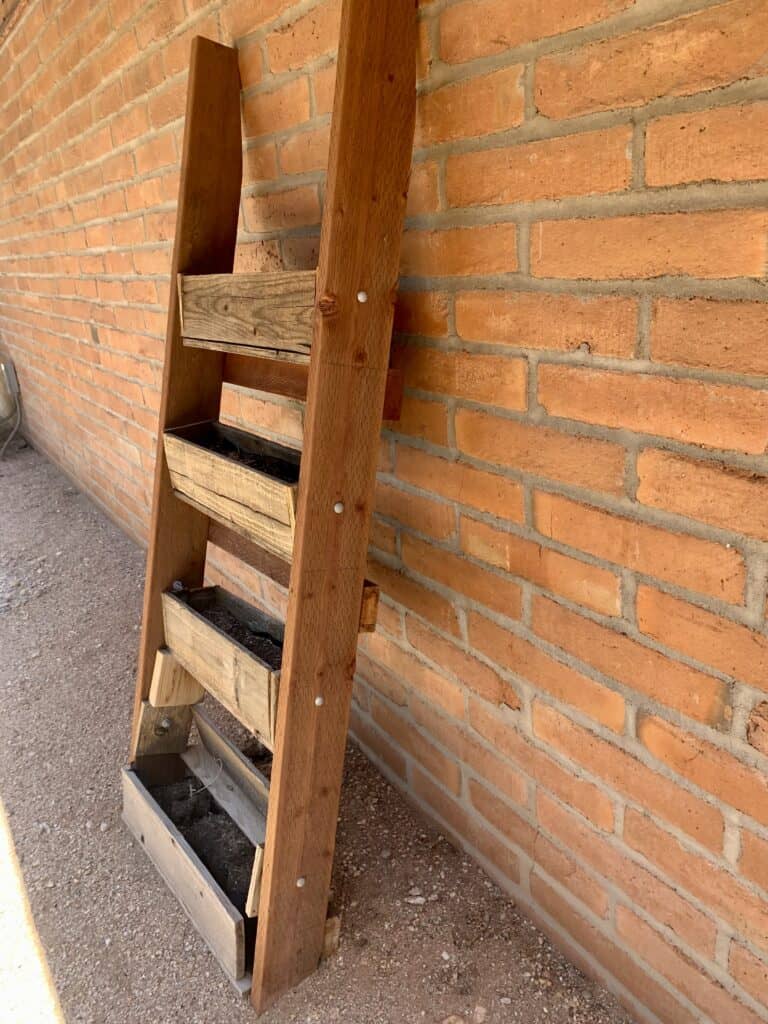
Woodworking projects
Building things yourself is a fundamental homesteading activity that can provide a sense of satisfaction and help you develop new skills.
Whether it’s building a chicken coop, raised garden beds, wooden fencing, or a piece of furniture, the process of creating something with your own hands can be rewarding and empowering.
There are a lot of things you can build with scrap lumber. My husband and kids built enclosed raised garden beds, an herb ladder, picnic bench, some exercise equipment (pull up bar, something for calf raises), our kids’ beds (with storage) and desks.
My husband and kids also build two large wooden structures to hold firewood.
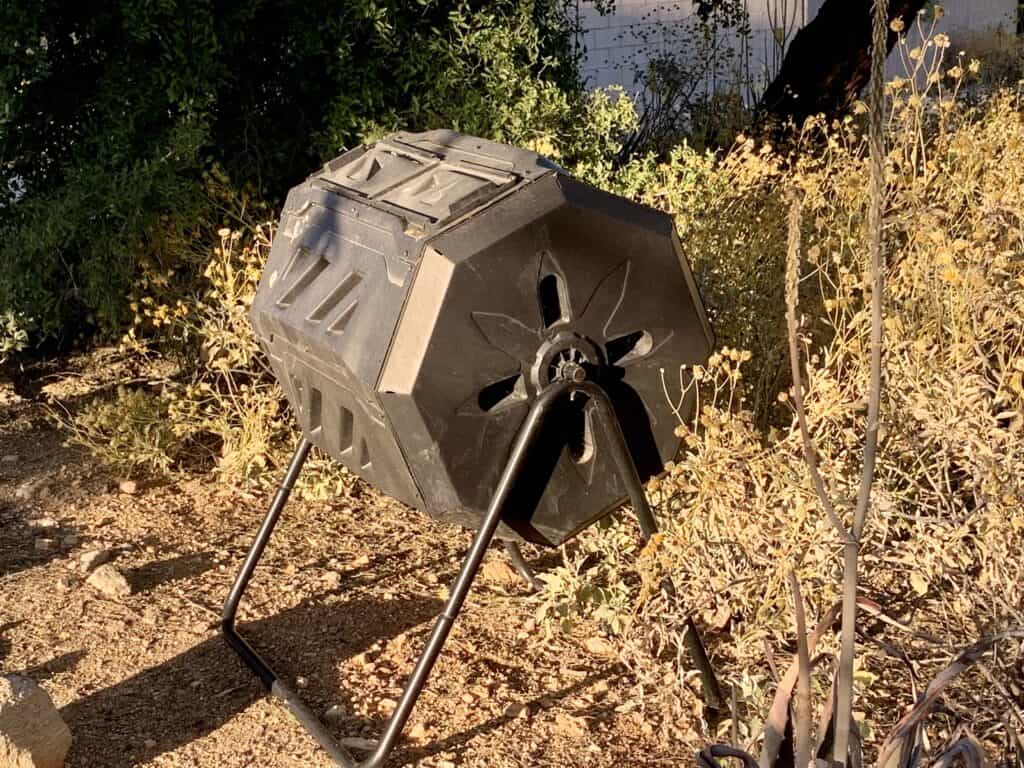
Start composting
Composting is an essential part of homesteading because it allows you to turn food scraps and yard waste into nutrient-rich soil for your garden. It also keeps this waste out of the landfills.
You can compost in a simple backyard bin, a pile, or in a more complex system like a worm farm or vermicomposting system. To start composting, collect your food scraps, yard waste, and other organic materials like leaves, coffee grounds, and eggshells, and layer them in your compost pile or compost tumbler.
Over time, the natural process of decomposition will break down the materials into rich, dark compost that can be used to fertilize your garden. Composting helps reduce food waste and creates a sustainable source of fertilizer.
Some cities have composting programs, in addition to paper and glass recycling, etc. I have a compost tumbler with two chambers. I fill one side for six months then fill the other side for six months.
Learn to forage edibles
When I lived in Washington state, blackberry bushes were plentiful. It was incredible to pick blackberries that were growing natively. Sadly, now I’m back to buying them at the grocery store!
Learning how to forage for wild edibles like berries, mushrooms, and nuts is a valuable homesteading skill that can provide a free and sustainable source of food.
However, before eating anything or even picking anything, research the edible plants and fungi in your area and to learn proper identification techniques. You should also make sure to forage in areas that are safe and legal to do so, and to respect the natural environment by not over-harvesting or damaging the plants.
Now that I live in the desert, I:
Have made flour from mesquite pods
Making flour from mesquite pods is a sustainable homesteading activity and an alternative to traditional wheat or white flour. You can grind mesquite pods into a fine powder to make flour for baking.
NOTE: Learn how to do this correctly so you aren’t affected by the mold that can be common on mesquite pods.
Mesquite trees are drought-tolerant and can thrive in arid climates, making them a great choice for homesteaders in desert regions. In addition to helping stop erosion, they provide shade, and grow pods. You can collect mesquite pods in the fall, dry them, and then ground them in a flour mill or blender. I use my Vitamix food processor.
Mesquite flour has a sweet and nutty flavor and can be used in a variety of baked goods like bread, pancakes, and cookies.
Pick desert hackberries
I have many desert hackberry trees on my property. They are drought-tolerant and require zero care. My family enjoys picking handfuls of the tiny orange berries. They taste a bit like tomatoes. There’s plenty for us and the birds who love them.
Harvest prickly pear
Harvesting prickly pear another example of utilizing desert survival food that grows natively. I’m lucky that my property has dozens of prickly pear cactus. We lost a few in a severe drought years ago but still have lots of fruits to harvest. It’s important to share with wildlife too.
Prickly pear is a type of cactus that produces edible fruit called tunas. You can harvest them in late summer or early fall when they are ripe and juicy. I always leave the ones that have bite marks on them for wildlife and insects who also enjoy them.
You have to use caution when harvesting prickly pear because of the cactus spines, but it’s fun. I wash and blend them (in my handy Vitamix), and strain them outside to remove the spines. I freeze them in ice cube trays to use in drinks. Make prickly pear salsa, punch, jam/jelly, sauce, and frozen prickly pear popsicles.
Learn how to harvest prickly pear safely to avoid the cactus spines and rattlesnakes and to learn how to extract the juice.
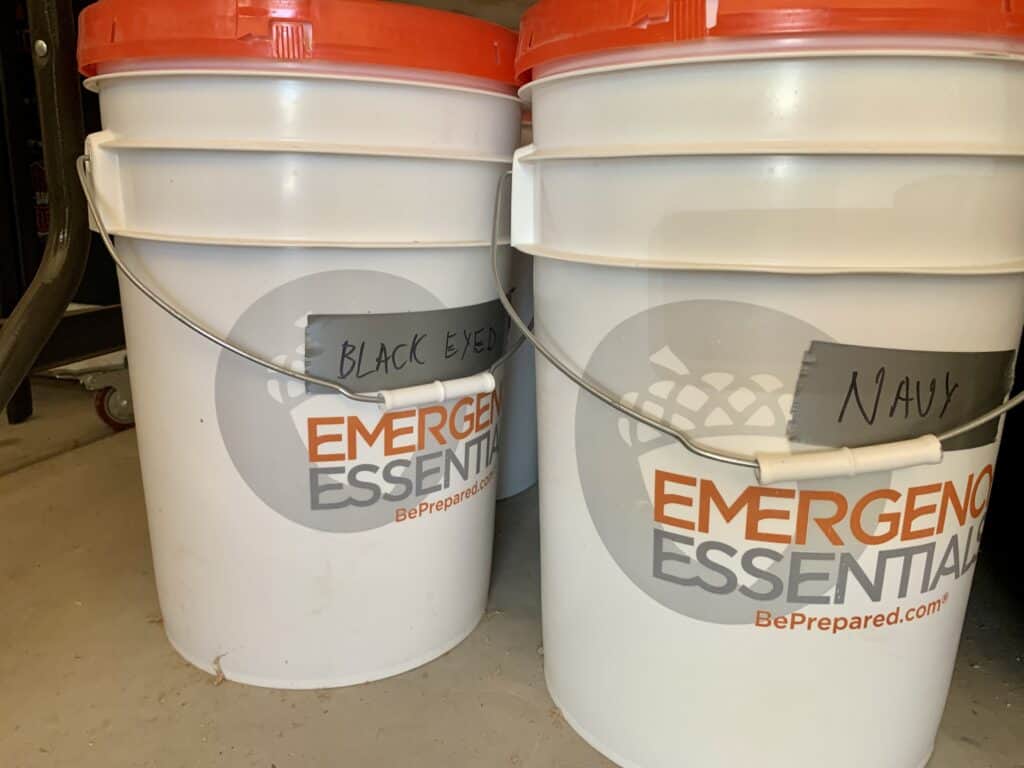
Prepare for emergencies
Being prepared is an essential homesteading idea that can help you and your family stay safe and self-sufficient in the event of an emergency or unexpected event. Being prepared can include having:
- Supply of food and water
- First aid kit
- Emergency supplies like flashlights and batteries
As a homesteader, being prepared can also involve having backup systems in place for your crops, livestock, and other resources. This can include having a generator or alternative power source, backup water storage, and extra supplies of animal feed and medical supplies.
By being prepared, you can build resilience and self-sufficiency into your homesteading lifestyle, and ensure that you and your family are ready for whatever challenges may come your way.
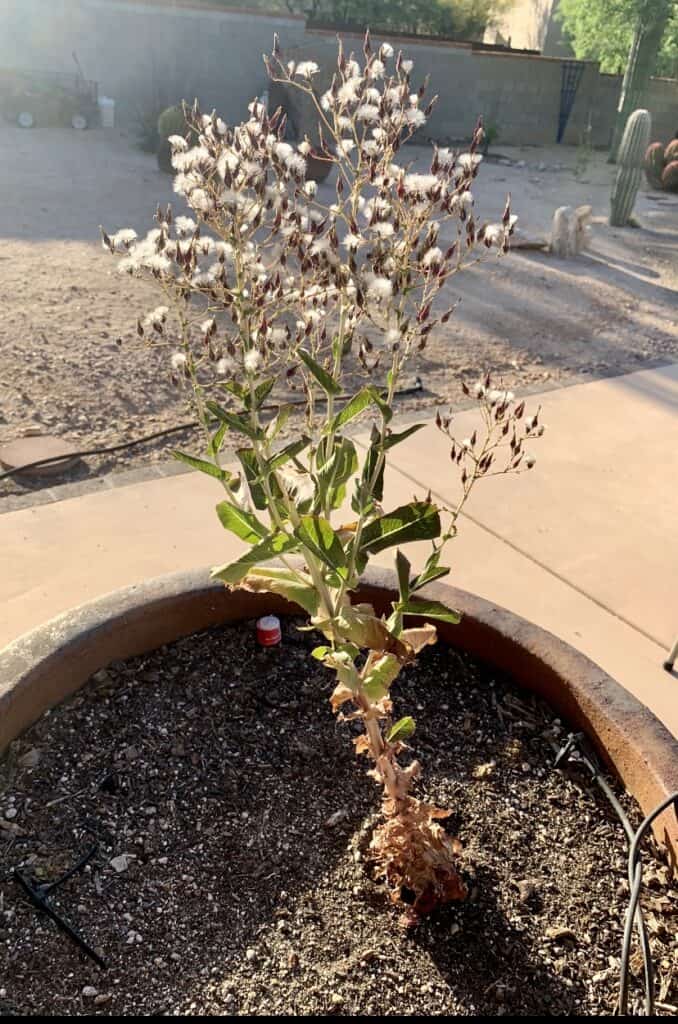
Save seeds and buy organic seeds
Collecting and saving seeds is a way to preserve plant varieties, reduce costs, protect heirloom varieties, and increase self-sufficiency. It’s a great way to for beginners to homestead.
Learn about seed saving before you begin. Depending on what else you are growing in the area, there’s a chance of cross-pollination. If you are growing heirloom plants, you will want to ensure their high quality. Be sure to save seeds from crops you are growing, not seeds from store-bought fruit.
Saving wet seeds
Start with easy-to-save seeds such as saving tomato seeds and watermelon seeds. They are easy to collect and have a high chance to regrow. Timing is important. When saving “wet” seeds (from pumpkins, tomatoes, melon, eggplant, squash, etc.), you have to harvest the seeds when the fruits are ripe. Then you have to remove the wet pulp or gelatinous coatings that surround the seeds.
Here’s how to save wet seeds:
- Collect seeds from ripe fruits.
- Put them in a glass jar or bowl filled with a small amount of water. Keep indoors out of direct sunlight.
- Stir the seeds a few times each day. As it ferments, the viable seeds will sink to the bottom.
- Pour out the water and rinse the seeds.
- Set seeds to dry on a baking sheet or a plate.
Saving dry seeds
Seeds from peas and beans are also easy to save. Both need to be left on the plants until their pods turn brown and dry. The seeds should be rattling on the inside.
How to save seeds from peas and beans:
- Remove the pods from plants when they are dried.
- Keep pods intact, and spread them on a baking sheet or plate. Be sure they are out of direct sunlight.
- After a few weeks, shell the pods, and extract the seeds.
By collecting and saving seeds from your plants, you can ensure that you have a supply of fresh, high-quality seeds to plant each season, instead of relying on store-bought seeds.
Saving seeds is an important step in building a self-sustaining and resilient homestead. I feel the satisfaction of growing full circle. I grow plants from seed, and then save seeds from those plants to plant the following season or year.
Build a root cellar
A root cellar is a cool and dark storage area that can be built in a variety of locations, including basements, closets, crawl spaces, or even outside. Installing one is a practical and useful homesteading idea that can help you store fresh produce, canned goods, and other foods for long-term use.
Root cellars are meant to maintain a consistent temperature and humidity level, which helps to preserve food and extend its shelf life. You can customize it to fit your specific needs.
Learn how to fish
Learning how to fish is a valuable skill that can provide a sustainable and healthy source of protein for your family. You can fish in rivers, lakes, and oceans, and can yield a variety of fish like trout, salmon, catfish, and bass.
Before beginning, research the local laws and regulations and obtain a fishing license or permit. You’ll also need to purchase or rent fishing equipment like rods, reels, and bait.
See what you can borrow from someone you know before investing in equipment. There are different types of fishing reels depending on the water and the fish. You can also DIY and learn how to make a fishing rod.
In addition to learning a new skill and potential new hobby, fishing can also provide a great opportunity for family bonding and outdoor recreation. By taking up fishing, homesteaders can become more self-sufficient and reduce their reliance on store-bought meat and fish.
Plant a permaculture garden
Plant a permaculture garden that mimics natural ecosystems to create a self-sustaining food source. Your plan will maximize the unique ecosystem on your property.
I highly recommend checking out books from the library to learn about this effective method from growing fruits and vegetables. There are many beginner permaculture garden books.
Install a greywater system
Installing a greywater system is an excellent homesteading idea that can help you conserve water and reduce your environmental impact. A greywater system collects water from sinks, showers, and washing machines and redirects it to irrigate plants and trees in your garden.
This system can help you reduce your water consumption by reusing water that would otherwise be wasted.
Start a community garden
Starting a community garden is a wonderful homesteading idea in urban settings, suburban areas, and also in rural areas. It will bring people together and provide a source of fresh produce for your community.
Community gardens can be created in a variety of spaces, from vacant lots to public parks, and can provide an opportunity for people of all ages and backgrounds to connect with each other and with the land.
By working together to cultivate and harvest vegetables, fruits, and herbs, community gardens can help promote food security and healthy eating habits. It can also provide educational opportunities, teaching them about sustainable agriculture, conservation, and community building.
By starting a garden in your community, you can help foster a sense of belonging and cooperation, while also promoting healthy, sustainable living.
Generate your own power
Homesteaders often look for ways to reduce their reliance on the grid by generating their own power. Solar panels, wind turbines, and hydroelectric systems are all options for generating electricity.
While these systems can be expensive to install, they provide a more sustainable source of power.
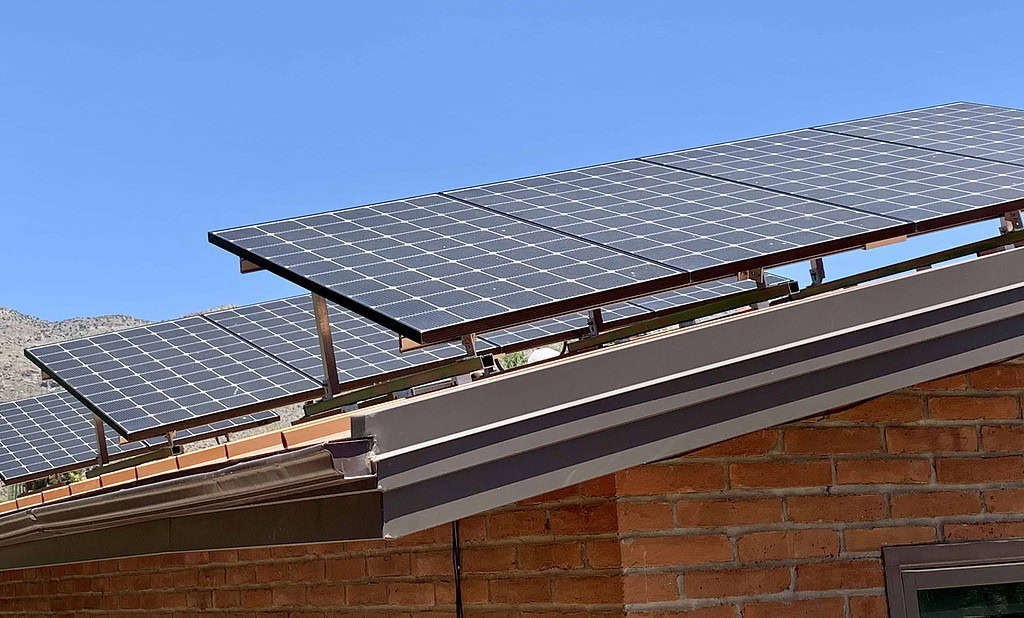
Install solar panels
Exploring solar options is a great way to reduce your carbon footprint and generate your own power on your homestead. Solar power systems can range from small-scale setups like solar panels for outdoor lighting to more complex systems that can power your home.
Solar panels can be installed on roofs, ground mounts, or even on a pole or tracking system to maximize sun exposure. Solar power is renewable and sustainable, and can help reduce your dependence on fossil fuels.
While solar power systems can be expensive upfront, they can also provide long-term cost savings by reducing your reliance on the grid. Exploring solar options can be a great way for homesteaders to live more sustainably and reduce their impact on the environment.
Install wind turbines
Wind power is renewable and sustainable, and can help reduce your reliance on the grid. Installing a wind turbine is another great option for generating your own power and living more sustainably on your homestead. Wind turbines can be installed on a tower or pole to catch the wind and generate electricity.
They can range in size from small backyard turbines to large-scale systems that can power an entire homestead. While wind turbines can be more expensive to install than solar panels, they can also provide a more reliable source of power in areas with consistent wind.
Exploring wind turbine options can be a great way for homesteaders to generate their own power, reduce their carbon footprint, and live more sustainably.
Install hydroelectric systems
This is another option for generating renewable energy on your homestead. Hydroelectric systems use the power of moving water to generate electricity, and can be installed on streams, rivers, or other sources of flowing water.
They are customized to fit your specific needs and available resources, and can range in size from small micro-hydro systems to larger setups that can power an entire homestead.
While hydroelectric systems can be more complex to install and maintain than solar or wind systems, they can also provide more consistent and reliable power in areas with consistent water flow. Hydroelectric power is a reliable and sustainable source of energy, and can help reduce your reliance on the grid.
Exploring hydroelectric options can be a great way for homesteaders to generate their own power and live more sustainably.
Practice natural pest control methods
In addition to building a bat box, attracting owls, and raising chickens, ducks, and geese, there are other things you can do to naturally control pests. Consider crop rotation, companion planting, beneficial insects, and homemade sprays to protect your garden.
Make your own wine, beer, and mead
Making your own beverages can be a fun and rewarding hobby that allows you to explore new flavors and experiment with different recipes. It’s also a way to connect with others and share your creations with friends and family.
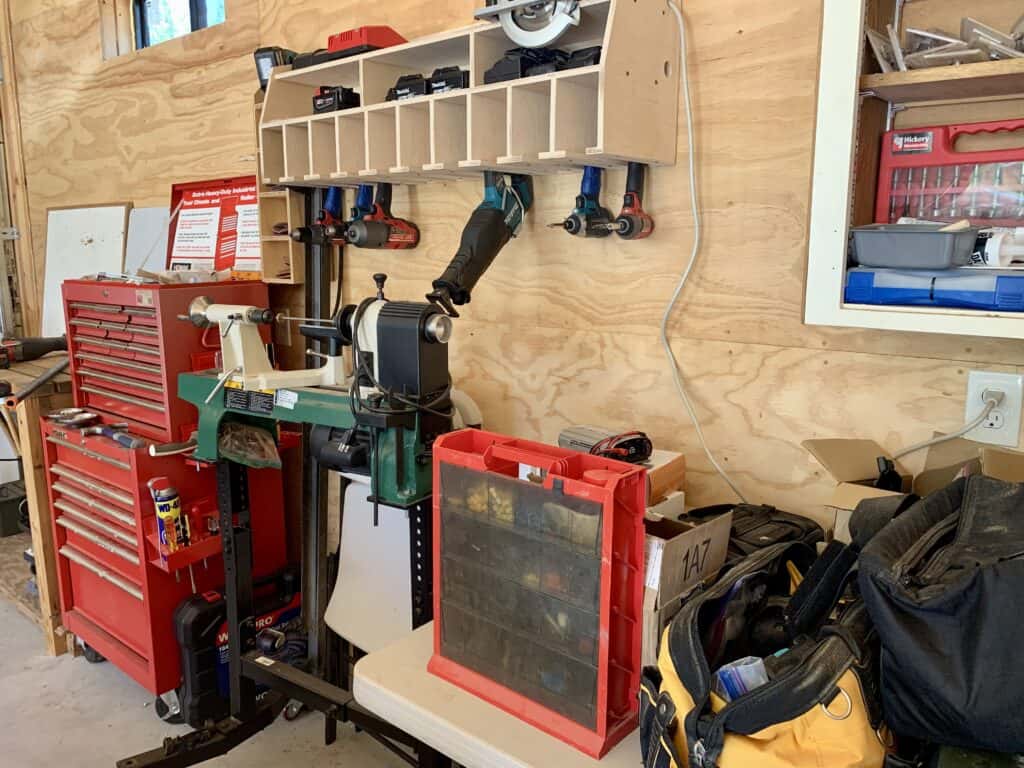
Build a shop, barn, coop, stable, shed
Building a barn or other auxiliary structure can provide shelter and storage for your livestock, equipment, and supplies. These structures can also help you organize your homestead and increase your efficiency.
A barn or stable can provide a safe and comfortable home for your animals, protect them from extreme weather conditions, and provide a space for milking, shearing, or other animal-related activities.
Think about what is important and interesting to you.
Building an auxiliary structure like a workshop, greenhouse, or storage shed can also help you increase your productivity and organization. It can be customized to fit your needs and can be built using different materials, from traditional wood framing to modern metal buildings.
Homesteading Ideas Involving Animals and “Alive Things”
Sometimes when people think about how to start a homestead, they think of raising animals. That makes sense as it’s a stomach-filling way of making a real difference with meat, milk, or eggs.
In addition to raising animals like cattle, pigs, goats, sheep, chickens, ducks, and geese, there are also others to consider that provide in different ways.
Start a worm bin
A worm bin is a container that houses a colony of red wigglers, a type of worm that is commonly used for vermicomposting. Vermicomposting involves using worms to break down food scraps and other organic material into nutrient-rich compost that can be used to fertilize plants.
Starting a worm bin or worm farm is a great way to begin homesteading and can provide a valuable source of compost for your garden. It’s relatively easy and can be done using a simple plastic container, bedding material like shredded newspaper or leaves, and a small number of red wigglers.
As your worm colony grows, they will consume more food scraps and produce more compost, which can be used to enrich your soil and improve your garden. Starting a worm farm is a simple and rewarding homesteading activity that can help you reduce waste and improve the quality of your soil.
Raise bees
Keeping bees is another homesteading idea you can do with limited space and resources. They don’t require the day-to-day care that poultry and livestock do.
Bees are important pollinators and can also provide a source of honey and beeswax. You can start with just one or two hives and gradually expand as you gain experience.
Do your research, and learn proper beekeeping techniques and equipment to ensure the health and safety of your bees and yourself. More resources:
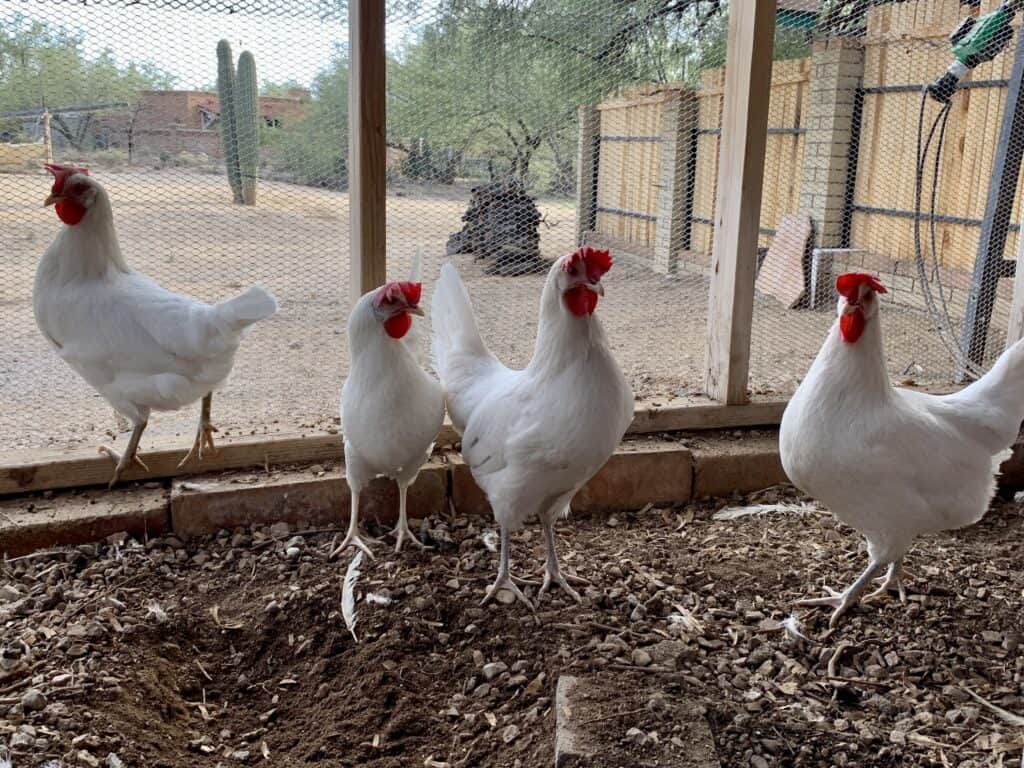
Raise backyard chickens
This is one of the more common homesteading ideas — and for good reason. Raising a flock of chickens can provide a steady supply of fresh eggs, meat, and fertilizer for your garden.
Chickens are a popular choice for homesteaders because they’re relatively easy to care for and often easier than raising mammals.
Chickens will eat insects, weeds, and your fruit/veggie scraps. Before getting chickens, research the local ordinances (especially about roosters) to ensure you’re allowed to keep them.
You don’t need a rooster for chickens to lay eggs. However, if you want to hatch chicks, you need a rooster. This can create a sustainable source of hens, to increase meat or egg production.
Chickens are relatively easy to care for. You can raise them in a coop with a chicken run or free-range depending on your spaces and local regulations. Make sure to provide your chickens with proper food, water, and shelter from weather and predators, and to practice good hygiene to prevent disease.
- California white chickens (pictured above)
- Best egg laying chickens
- Best meat chickens
- Keeping a rooster pros and pons
- Facts about raising chickens
Raise ducks
Some flock owners raise ducks alongside their chickens. They will benefit from a water source, either a small lake or even a kiddie pool. Ducks will help with mice control and will eat insects. Consider raising ducks for eggs, meat and/or down feathers. There are many duck breeds to meet your goals.
- Rouen duck – friendly meat breed
- Indian runner ducks – eggs and insect control
- Pekin duck – eggs and meat
Raise small livestock
If you have space on your homestead, raising small livestock like rabbits, goats, or sheep can provide additional sources of food and income. These animals can provide meat, milk, and fiber, and can also help with weed control and soil fertilization.
Learn about raising rabbits for meat, raising goats for profit, and meat sheep breeds to consider. Before buying animals, it’s important to have a clear plan with your goals and areas on your property you can use.
- Rabbits for meat, manure for farm and garden
- Goats for meat, milk, hides, hair; can make cheese, etc.
- Sheep for lamb, hogget, mutton; milk; wool; fibers
Make sure you research the local laws and regulations before bringing any animals onto your property. Animals require daily care so be sure to have clear goals in mind before beginning.
Raise geese
Check for restrictions on poultry ownership. Raising geese is a unique homesteading idea that can provide a source of meat and down feathers. Geese are hardy and adaptable animals; they are excellent foragers. They can thrive in a variety of environments and can be raised in small spaces.
Geese can help with weed control, pest control, and soil fertilization. Downsides: They lay eggs but perhaps not enough to make them worth keeping. They can be mean if they aren’t raised around people when they are young.
Raise large livestock
Raising large livestock can be a rewarding and challenging homesteading activity that can provide a source of meat, dairy, and other products for your family. Some examples of larger animals you can raise to produce food include:
- Cattle, including miniature cattle, mini milking cows, cows for meat
- Small pig breeds for meat
These livestock require more space, resources, and attention than small livestock like chickens or rabbits.
When considering raising livestock, it’s essential to learn about pasture rotation; if you will want to breed animals (for cattle, this means budgeting for artificial insemination or purchasing a bull to mate with heifers and cows); and a plan for caring for the animals.
If you plan it out well, you can create a sustainable small meat operation. Raising large livestock requires careful planning and management, including proper shelter, feed, water, pasture grazing opportunities, protection from predators, and veterinary care.
Before buying animals, make sure you have the appropriate resources and infrastructure in place to provide for their needs. They require DAILY CARE. If you are up for the challenge, raising large livestock can be a rewarding way to live a self-sufficient and sustainable lifestyle.
Do You Need a Lot of Room to Start Homesteading?
Homesteading doesn’t require a lot of land, but the amount of space you need will depend on what you want to do.
For example, if you’re interested in raising livestock or growing a large garden, you’ll need more space than if you’re focused on smaller-scale activities like container gardening. However, it’s possible to start homesteading on a small piece of land or even in an urban apartment or small patio or balcony.
Consider also community gardens in your area. Some areas allow you to rent out a plot to garden in.
Homesteading Ideas for Small Spaces
Urban homesteading or homesteading in small spaces is doable. Maybe you won’t raise animals but there is a lot you can do.
There are many ways to make the most of limited space, such as using vertical gardening techniques (like a spiral herb garden, hydroponics, and any garden structure that has leveled tiers — like a ladder). You can also plant in raised beds or containers.
You can compost in homemade containers or buy a small compost tumbler.
If you want to raise animals, choose smaller animals like rabbits, quail, bees, or a small flock of chickens. There are also many indoor activities such as fermenting, making soap, drying herbs, making bone broth, sewing, refinishing furniture, and more.
Easy Homesteading Ideas for Smaller Spaces and Urban Settings
- Cooking and baking from scratch
- Storing and preserving food
- Growing and preserving herbs, fruits, and vegetables
- Container gardening, small raised beds, small hydroponics setup
- Small compost tumbler
- Make nut milk and nut butter – Cashew milk, almond milk, etc.
- Make date paste – Blend dates in a food processor
- Use leftover bones to make bone broth
- Make iced tea or lemonade
- Bake sourdough bread and other types with or without a bread maker
- Bake a cake from scratch
- Whip up frosting from scratch; try making mousse with homemade whipped cream
- Instead of buying pancake mix, make them from scratch. The mix just contains flour, baking powder, salt, and sugar.
- If you have an Insta-Pot, it’s easy to make homemade yogurt with a yogurt starter
- I’m not in favor of canning unless you are experienced but you can easily make and use single jars of marmalade, jam, or jelly.
- Make hummus
- Make pesto
- Cook over a fire pit — tin foil meals, etc.
- Make a fire pit
- Make a tree swing with a sanded piece of wood, strong rope, and a sturdy tree branch
- Use a solar oven or sun oven
- Start a garden in pots, containers, a garden bed, or a patch of ground
- Grow herbs indoors or outdoors; dry and freeze for future
- Make your own salad dressing; so easy with olive oil, balsamic, and herbs
- Compost in a compost tumbler, compost pile, or give to others to compost
- Discover the art of making homemade staples like kombucha, apple cider vinegar, vegetable or bone broth, homemade dressings, and a variety of seasonings.
Even on a small piece of land or in an urban apartment, you can garden in containers. Additionally, there are many things you can do indoors, such as fermenting or making soap.
Starting small and focusing on activities that fit your available space and resources is the key to successful homesteading. As you gain experience and confidence, your interests may shift. You may want to gradually expand your activities or look for a larger property to accommodate your goals.
What Kind of Animals Can You Raise for Food
- Chickens: Meat and eggs; relatively easy to raise
- Ducks: Meat and eggs; are more resilient in wet conditions than chickens
- Turkeys: Meat
- Geese: Meat; lay just a few eggs; can also be used for feathers and down
- Quail: Raising quail can provide meat and eggs; require less space than chickens
- Rabbits: Meat; can be raise in a small space
- Goats: Raising goats for meat and milk; weed control and land clearing
- Sheep: Meat and milk; wool; relatively easy to raise
- Pigs: Meat and can be raised on pasture or in a barn
- Cows: Meat or milk; can use to make other dairy products; require a larger amount of space and resources than other animals
What is the Purpose of Homesteading
Homesteading is a way of life that values simplicity, self-sufficiency, and sustainability. It doesn’t have to mean “living off the grid”. It’s more about being self-reliant any way you can and doing things the way they were done before all of the modern conveniences. It’s often hard work and forces a slower pace.
By growing your own food, raising animals, generating your own power, and conserving resources, you can create a lifestyle that provides for you and your family.
Learning traditional skills and making your own products can also help you reduce waste and live more sustainably.
Does It Cost a Lot of Money to Start Homesteading
Homesteading can be as expensive or as inexpensive as you want it to be, depending on your goals and resources.
While some aspects of homesteading, such as purchasing land, building infrastructure, or adding renewable energy sources can require significant upfront costs, there are many ways to start homesteading cheaply.
For example, starting a small vegetable garden or container garden can be done with minimal investment in seeds, soil, and basic gardening tools. Raising backyard chickens or small livestock like rabbits or quail can be done with a relatively low initial investment in housing and feed.
In many cases, homesteading can save you money in the long run by reducing your reliance on store-bought food, energy, and household goods. By growing your own food, generating your own power, and making your own products, you can reduce your expenses and increase your self-sufficiency over time.
Ultimately, the cost of homesteading will depend on your specific goals and resources, but it’s possible to start small and gradually expand your activities as your budget allows.
See what you can borrow instead of buy, when you are starting out.
Benefits of Homesteading
There are many advantages to homesteading. Here are some of them:
- Satisfaction of doing something yourself
- Get back to the basics
- Work at a slower pace
- Conserve resources; encourages sustainability by upcycling and repurposing
- Create something from nothing
- Pride of a job well done
- Learn new skills; gain new hobbies
- Reach out to friends and neighbors
You may literally be able to enjoy the fruits of your labor.
You may find yourself trading with friends and neighbors and building a community. I routinely pass out jars and bags of dried herbs and extra lemons and oranges to neighbors. I give fistfuls of Swiss chard to one of my friends who loves it.
In return, my friends have gifted me with bags of kumquats, duck eggs, extra zucchini, jam, homemade tamales, and more.
With a little bit of creativity and resourcefulness, you can pursue a fulfilling lifestyle. I hope these homesteading ideas help to inspire you.
What is Homesteading
Homesteading is a lifestyle that focuses on self-sufficiency and sustainability. It has become increasingly popular in recent years as people have grown tired of the stresses of modern living and the economy and want to slow down and get back to nature.
It involves developing traditional skills like gardening, canning, and woodworking, and often includes a focus on natural and organic living.
It is about living off the land in any way you can. This may mean growing your own food (through gardening, orchards, raising animals); making things instead of buying them (sewing, woodworking, cooking, soap-making); minimizing your reliance on city water, electricity, and gas (through rainwater harvesting, solar power, wind power, etc.); and more.
As you can see from the homesteading ideas above, it can take many forms. Whether you are starting out and live on a large rural property or are a beginner urban homesteader, the central idea is to live off the land and reduce reliance on external resources.
It can be a challenging but it’s important to know it doesn’t have to be all or nothing. Think about your interests and goals. What are you trying to accomplish or learn? Then start with one or two homesteading ideas. Grow your skills from there.
How to Start Homesteading
If you’re interested in homesteading, use some of these ideas to get you started. Here’s how to start homesteading:
- What are you interested in?
- What do you hope to accomplish or “get out of your system” by trying it?
- Consider what you can make or build from scratch that you usually would buy.
- Pick one thing.
- Do you have space for it?
- If yes, then make a list of all the things you need to do it. This includes any special considerations; what you have to buy; what can you borrow; and how much it will cost.
- If it’s in your budget, and you have room, get started!
This can mean making pancakes from scratch instead of using a mix or making one meal at home you usually order in for. Starting with a basil plant is fairly easy. You can find them for sale in grocery stores. Buy one, and tend to it. Use it in cooking.
Think about ways of using less and of maximizing the things you have. What do you throw away that can be used? Is there a way of using them in a different way? Check with your city to see if they collect composting, glass recycles, or cardboard.
Depending on the season and the weather, you may pursue different things at different times of the year.
Homesteading for Beginners
Homesteading doesn’t have to be hard. If it’s something you want to do, even the most complicated of projects (such as planning for a solar system) is doable. Choose things that align with your values and passions, and it won’t always seem like work. Remember, you can start with small projects, and grow from there if you decide to.
With a little bit of creativity and resourcefulness, you can make your homestead thrive. Start with one thing and build on from there. When I started walking around my property to take pictures, I was shocked to see all the things we’ve done. You don’t have to do them all at once.
Building a Homestead Bit-by-Bit
After you get started homesteading you may enjoy a sense of increased self-reliance, a slower pace, and a closer connection to nature. Starting a vegetable garden, raising backyard chickens, and building a greenhouse are just a few of the ways you can get started.
You can create a self-sustaining lifestyle that provides for you and your family for years.
Use these homesteading ideas to make a plan. Start small and focus on activities that fit your available space, resources, and interests. As you gain experience and confidence, you can gradually expand as your goals change.
How to start homesteading featured image credit: congerdesign from Pixabay

